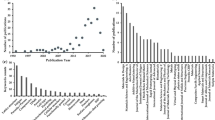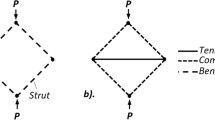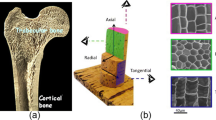Abstract
High-resolution additive manufacturing (AM) facilitates engineering applications of cellular lattices with complex geometries. The unique layer-by-layer process of AM causes the mechanical performance of as-fabricated lattice structures to deviate from the ideal value. In this study, the AM process-induced material anisotropy and geometric inaccuracy are integrated into the mechanical evaluation and topology optimization of lattice structures. Specifically, effective mechanical properties of typical strut-based and shell-based lattices are evaluated by the homogenization method combined with the process-induced features. The equivalent stiffness parameters of ideal and as-fabricated lattices are integrated into the topology optimization algorithm to adaptively obtain corresponding macrostructures. Based on the knowledgebase of unit cells and optimized results, the threshold of the variation for microstructure is extracted to guide design and process parameter selection. The proposed design guidelines and evaluation-adjustment framework can be widely applied to various lattices fabricated by AM technologies.



















Similar content being viewed by others
References
Ajoku U, Saleh N, Hopkinson N, Hague R, Erasenthiran P (2006) Investigating mechanical anisotropy and end-of-vector effect in laser-sintered nylon parts. Proc Inst Mech Eng Part B J Eng Manuf 220:1077–1086
Alghamdi A, Downing D, McMillan M, Brandt M, Qian M, Leary M (2019) Experimental and numerical assessment of surface roughness for Ti6Al4V lattice elements in selective laser melting. Int J Adv Manuf Technol 105:1275–1293
Alhnan MA, Okwuosa TC, Sadia M, Wan K-W, Ahmed W, Arafat B (2016) Emergence of 3D printed dosage forms: opportunities and challenges. Pharm Res 33:1817–1832. https://doi.org/10.1007/s11095-016-1933-1
AlMangour B (2019) Additive manufacturing of emerging materials. Springer, New York
Aznarte E, Ayranci C, Qureshi AJ (2017) Digital light processing (DLP): Anisotropic tensile considerations. In: Solid Freeform Fabrication 2017: Proceedings of the 28th Annual International Solid Freeform Fabrication Symposium-An Additive Manufacturing Conference, SFF. pp 413–425
Balachandramurthi AR, Moverare J, Dixit N, Pederson R (2018) Influence of defects and as-built surface roughness on fatigue properties of additively manufactured Alloy 718. Mater Sci Eng A 735:463–474
Behera D, Chizari S, Shaw LA, Porter M, Hensleigh R, Xu Z, Roy NK, Connolly LG, Zheng XR, Saha S (2020) Current challenges and potential directions towards precision microscale additive manufacturing—Part II: laser-based curing, heating, and trapping processes. Precis Eng 68:301–308
Brackett D, Ashcroft I, Hague R (2011) Topology optimization for additive manufacturing. In: Proceedings of the solid freeform fabrication symposium, Austin, TX. pp 348–362
Cheng L, Zhang P, Biyikli E, Bai J, Robbins J, To A (2017) Efficient design optimization of variable-density cellular structures for additive manufacturing: theory and experimental validation. Rapid Prototyp J 23:660–667
Cheng L, Bai J, To AC (2019) Functionally graded lattice structure topology optimization for the design of additive manufactured components with stress constraints. Comput Methods Appl Mech Eng 344:334–359
Chua CK, Leong KF (2014) 3D printing and additive manufacturing: principles and applications (with companion media pack)—fourth edition of rapid prototyping. World Scientific, Singapore
Cooke W, Tomlinson RA, Burguete R, Johns D, Vanard G (2011) Anisotropy, homogeneity and ageing in an SLS polymer. Rapid Prototyp J 17:269–279. https://doi.org/10.1108/13552541111138397
Gibson I, Rosen DW, Stucker B (2014) Additive manufacturing technologies. Springer, New York
Gockel J, Sheridan L, Koerper B, Whip B (2019) The influence of additive manufacturing processing parameters on surface roughness and fatigue life. Int J Fatigue 124:380–388
Gu D, Shi X, Poprawe R, Bourell DL, Setchi R, Zhu J (2021) Material-structure-performance integrated laser-metal additive manufacturing. Science. https://doi.org/10.1126/science.abg1487
Günther J, Leuders S, Koppa P, Tröster T, Henkel S, Biermann H, Niendorf T (2018) On the effect of internal channels and surface roughness on the high-cycle fatigue performance of Ti-6Al-4V processed by SLM. Mater Des 143:1–11
Harrysson OLA, Cansizoglu O, Marcellin-Little DJ, Cormier DR, West HA II (2008) Direct metal fabrication of titanium implants with tailored materials and mechanical properties using electron beam melting technology. Mater Sci Eng C 28:366–373
Huang X, Zhou SW, Xie YM, Li Q (2013) Topology optimization of microstructures of cellular materials and composites for macrostructures. Comput Mater Sci 67:397–407
Jiang P, Rifat M, Basu S (2020) Impact of surface roughness and porosity on lattice structures fabricated by additive manufacturing—a computational study. Procedia Manuf 48:781–789
Jin Y, Li H, He Y, Fu J (2015) Quantitative analysis of surface profile in fused deposition modelling. Addit Manuf 8:142–148
Katheng A, Kanazawa M, Iwaki M, Minakuchi S (2021) Evaluation of dimensional accuracy and degree of polymerization of stereolithography photopolymer resin under different postpolymerization conditions: An in vitro study. J Prosthet Dent 125:695–702. https://doi.org/10.1016/j.prosdent.2020.02.023
Kim N, Bhalerao I, Han D, Yang C, Lee H (2019) Improving surface roughness of additively manufactured parts using a photopolymerization model and multi-objective particle swarm optimization. Appl Sci 9:151
Kowsari K, Zhang B, Panjwani S, Chen Z, Hingorani H, Akbari S, Fang NX, Ge Q (2018) Photopolymer formulation to minimize feature size, surface roughness, and stair-stepping in digital light processing-based three-dimensional printing. Addit Manuf 24:627–638
Lee H, Lim CHJ, Low MJ, Tham N, Murukeshan VM, Kim Y-J (2017) Lasers in additive manufacturing: A review. Int J Precis Eng Manuf Technol 4:307–322
Li S, Yuan S, Zhu J, Wang C, Li J, Zhang W (2020) Additive manufacturing-driven design optimization: building direction and structural topology. Addit Manuf 36:1406
Li S, Yuan S, Zhu J, Zhang W, Zhang H, Li J (2021) Multidisciplinary topology optimization incorporating process-structure-property-performance relationship of additive manufacturing. Struct Multidisc Optim 63:2141–2157
Maszybrocka J, Skrabalak G, Karolus M, Stwora A, Gapiński B (2017) Morphology and surface topography of Ti6Al4V lattice structure fabricated by selective laser sintering. Bull Polish Acad Sci Tech Sci 65:85–92
Meng L, Shi J, Yang C, Gao T, Hou Y, Song L, Gu D, Zhu J, Breitkopf P, Zhang W (2020) An emerging class of hyperbolic lattice exhibiting tunable elastic properties and impact absorption through chiral twisting. Extrem Mech Lett 40:100869
Panesar A, Abdi M, Hickman D, Ashcroft I (2018) Strategies for functionally graded lattice structures derived using topology optimisation for additive manufacturing. Addit Manuf 19:81–94. https://doi.org/10.1016/j.addma.2017.11.008
Park S-I, Rosen DW, Choi S, Duty CE (2014) Effective mechanical properties of lattice material fabricated by material extrusion additive manufacturing. Addit Manuf 1:12–23
Park S, Rosen DW (2016) Quantifying effects of material extrusion additive manufacturing process on mechanical properties of lattice structures using as-fabricated voxel modeling. Addit Manuf 12:265–273
Pegues J, Roach M, Williamson RS, Shamsaei N (2018) Surface roughness effects on the fatigue strength of additively manufactured Ti-6Al-4V. Int J Fatigue 116:543–552
Pereira S, Vaz AIF, Vicente LN (2018) On the optimal object orientation in additive manufacturing. Int J Adv Manuf Technol 98:1685–1694
Savio G, Curtarello A, Rosso S, Meneghello R, Concheri G (2019) Homogenization driven design of lightweight structures for additive manufacturing. Int J Interact Des Manuf 13:263–276
Sigmund O (1994) Materials with prescribed constitutive parameters: an inverse homogenization problem. Int J Solids Struct 31:2313–2329
Svanberg K (1995) A globally convergent version of MMA without linesearch. In: Proceedings of the first world congress of structural and multidisciplinary optimization. Goslar, Germany, pp 9–16
Tang Y, Dong G, Zhou Q, Zhao YF (2017) Lattice structure design and optimization with additive manufacturing constraints. IEEE Trans Autom Sci Eng 15:1546–1562
Tepylo N, Huang X, Patnaik PC (2019) Laser-based additive manufacturing technologies for aerospace applications. Adv Eng Mater 21:1900617
Tsopanos S, Raw M, McKown S, Shen Y, Cantwell WJ, Brooks W, Sutcliffe CJ (2010) The influence of processing parameters on the mechanical properties of selectively laser melted stainless steel microlattice structures. J Manuf Sci Eng. https://doi.org/10.1115/1.4001743
Verlee B, Dormal T, Lecomte-Beckers J (2012) Density and porosity control of sintered 316L stainless steel parts produced by additive manufacturing. Powder Metall 55:260–267
Wang P, Sin WJ, Nai MLS, Wei J (2017a) Effects of processing parameters on surface roughness of additive manufactured Ti-6Al-4V via electron beam melting. Materials (basel) 10:1121
Wang Y, Xu H, Pasini D (2017b) Multiscale isogeometric topology optimization for lattice materials. Comput Methods Appl Mech Eng 316:568–585
Wang Y, Arabnejad S, Tanzer M, Pasini D (2018a) Hip implant design with three-dimensional porous architecture of optimized graded density. J Mech Des 10(1115/1):4041208
Wang C, Zhu JH, Zhang WH, Li SY, Kong J (2018b) Concurrent topology optimization design of structures and non-uniform parameterized lattice microstructures. Struct Multidisc Optim 58:35–50
Wang C, Gu X, Zhu J, Zhou H, Li S, Zhang W (2020) Concurrent design of hierarchical structures with three-dimensional parameterized lattice microstructures for additive manufacturing. Struct Multidisc Optim 61:869–894
Wong KV, Hernandez A (2012) A review of additive manufacturing. ISRN Mech Eng 2012:1–10. https://doi.org/10.5402/2012/208760
Xia Z, Zhang Y, Ellyin F (2003) A unified periodical boundary conditions for representative volume elements of composites and applications. Int J Solids Struct 40:1907–1921
Yan C, Hao L, Hussein A, Raymont D (2012) Evaluations of cellular lattice structures manufactured using selective laser melting. Int J Mach Tools Manuf 62:32–38
Yang KK, Zhu JH, Wang C, Jia DS, Song LL, Zhang WH (2018) Experimental validation of 3D printed material behaviors and their influence on the structural topology design. Comput Mech 61:581–598. https://doi.org/10.1007/s00466-018-1537-1
Yu X, Zhou J, Liang H, Jiang Z, Wu L (2018) Mechanical metamaterials associated with stiffness, rigidity and compressibility: a brief review. Prog Mater Sci 94:114–173
Yuan S, Chua CK, Zhou K (2019) 3D-Printed Mechanical Metamaterials with High Energy Absorption. Adv Mater Technol 4:1800419. https://doi.org/10.1002/admt.201800419
Zegard T, Paulino GH (2016) Bridging topology optimization and additive manufacturing. Struct Multidisc Optim 53:175–192
Zha W, Anand S (2015) Geometric approaches to input file modification for part quality improvement in additive manufacturing. J Manuf Process 20:465–477
Zhang J, Yanagimoto J (2020) Topology optimization of microlattice dome with enhanced stiffness and energy absorption for additive manufacturing. Compos Struct. https://doi.org/10.1016/j.compositesb.2021.109241
Zhang W, Wang F, Dai G, Sun S (2007) Topology optimal design of material microstructures using strain energy-based method. Chinese J Aeronaut 20:320–326
Zhang J, Sato Y, Yanagimoto J (2021) Homogenization-based topology optimization integrated with elastically isotropic lattices for additive manufacturing of ultralight and ultrastiff structures. CIRP Ann 70:111–114. https://doi.org/10.1016/j.cirp.2021.04.019
Zhu JH, Zhang WH, Xia L (2016) Topology optimization in aircraft and aerospace structures design. Arch Comput Methods Eng 23:595–622. https://doi.org/10.1007/s11831-015-9151-2
Zhu J, Zhou H, Wang C, Zhou L, Yuan S, Zhang W (2020) A review of topology optimization for additive manufacturing: status and challenges. Chinese J Aeronaut. https://doi.org/10.1016/j.cja.2020.09.020
Acknowledgements
This work is supported by the NSAF (U1930207), Key Project of NSFC (51790171), NSFC for Excellent Young Scholars (11722219), NSFC for Young Scholars (51905439), and 111 Project (B21013).
Author information
Authors and Affiliations
Corresponding author
Ethics declarations
Conflict of interest
The authors declare that they have no conflict of interest.
Replication of results
Detailed data are provided in supplementary materials. All involved codes supporting the findings of this study are available from the authors upon reasonable request.
Additional information
Responsible Editor: YoonYoung Kim
Publisher's Note
Springer Nature remains neutral with regard to jurisdictional claims in published maps and institutional affiliations.
Supplementary Information
Below is the link to the electronic supplementary material.
Rights and permissions
About this article
Cite this article
Li, S., Yuan, S., Zhu, J. et al. Optimal and adaptive lattice design considering process-induced material anisotropy and geometric inaccuracy for additive manufacturing. Struct Multidisc Optim 65, 35 (2022). https://doi.org/10.1007/s00158-021-03153-1
Received:
Revised:
Accepted:
Published:
DOI: https://doi.org/10.1007/s00158-021-03153-1




